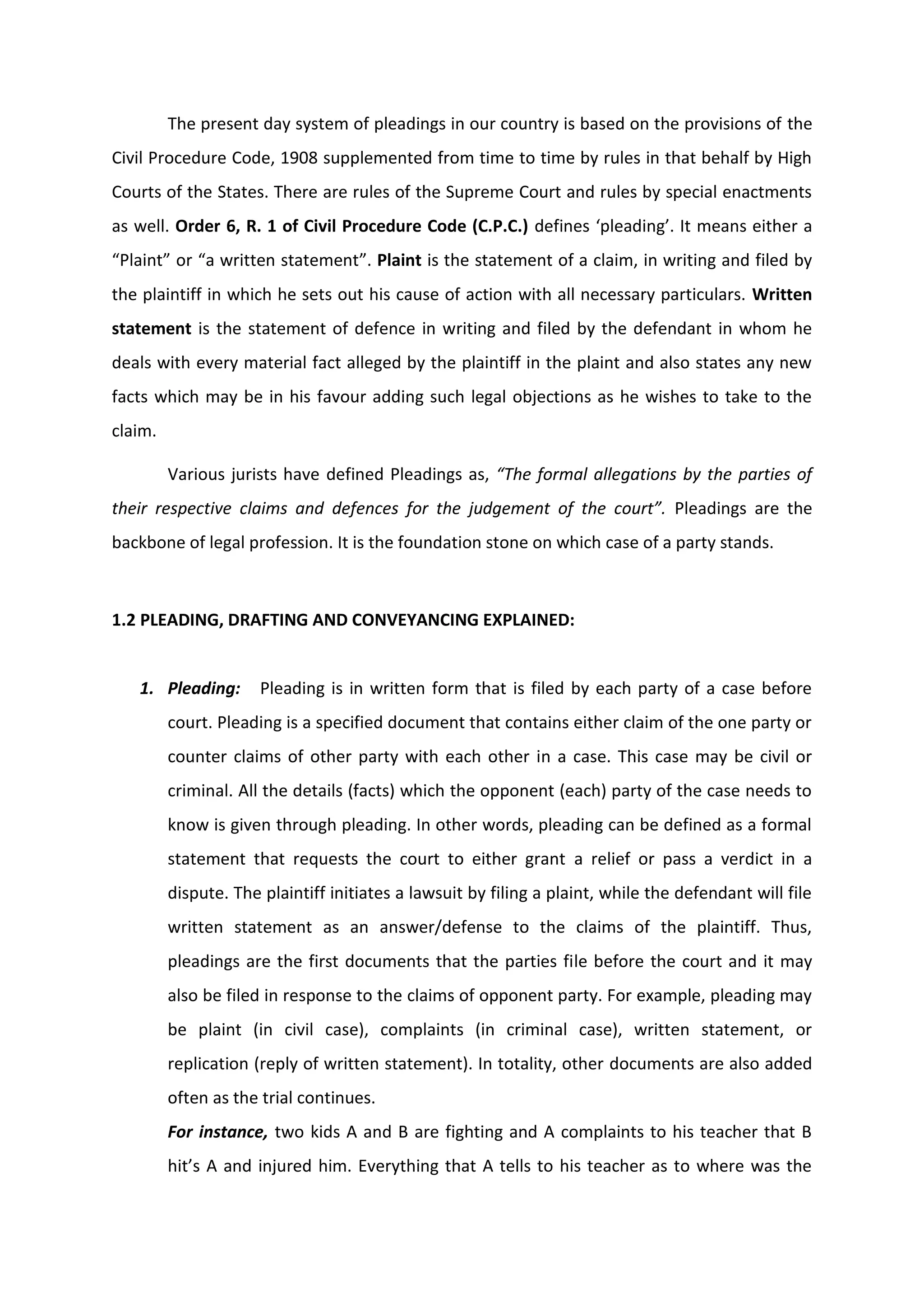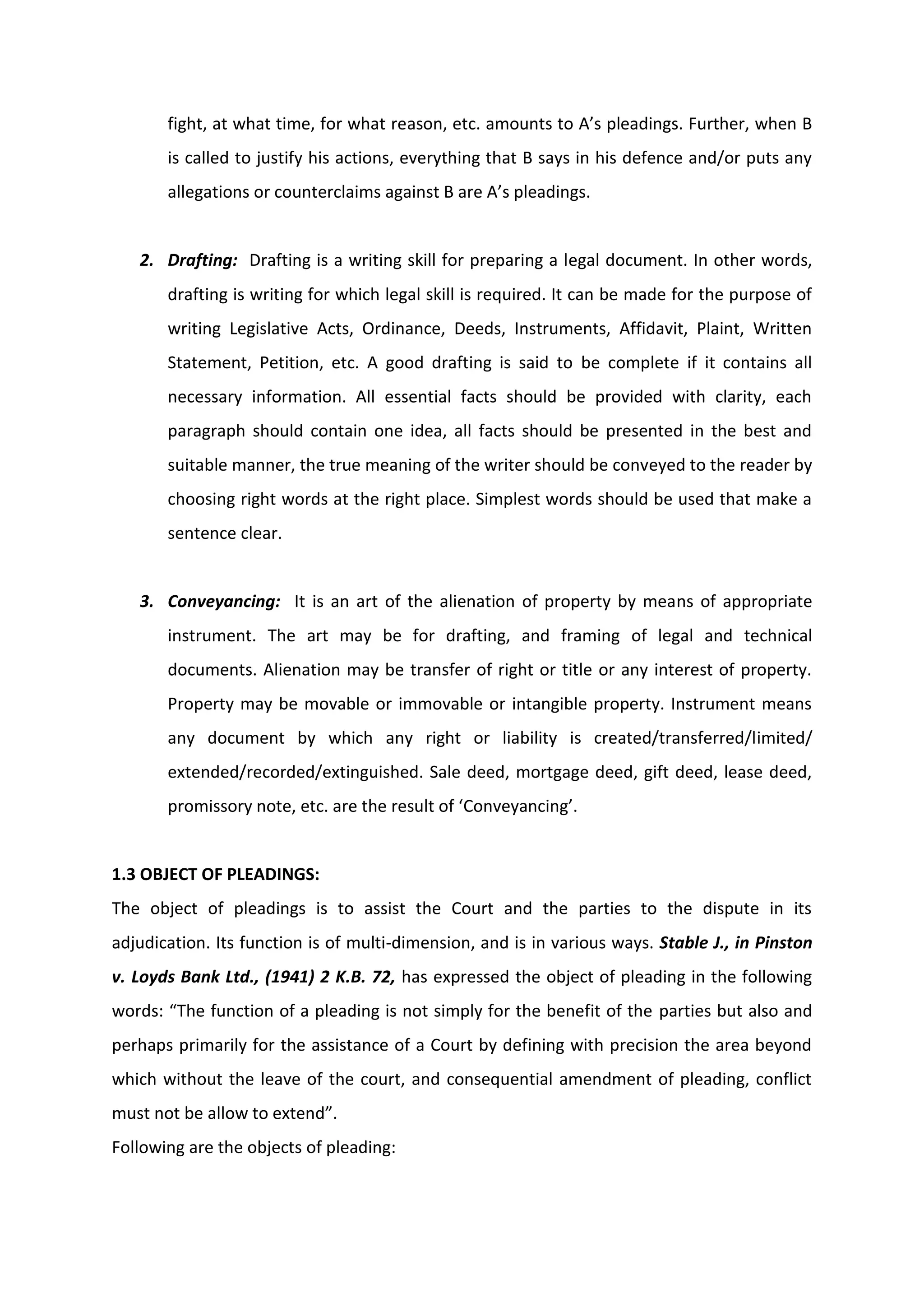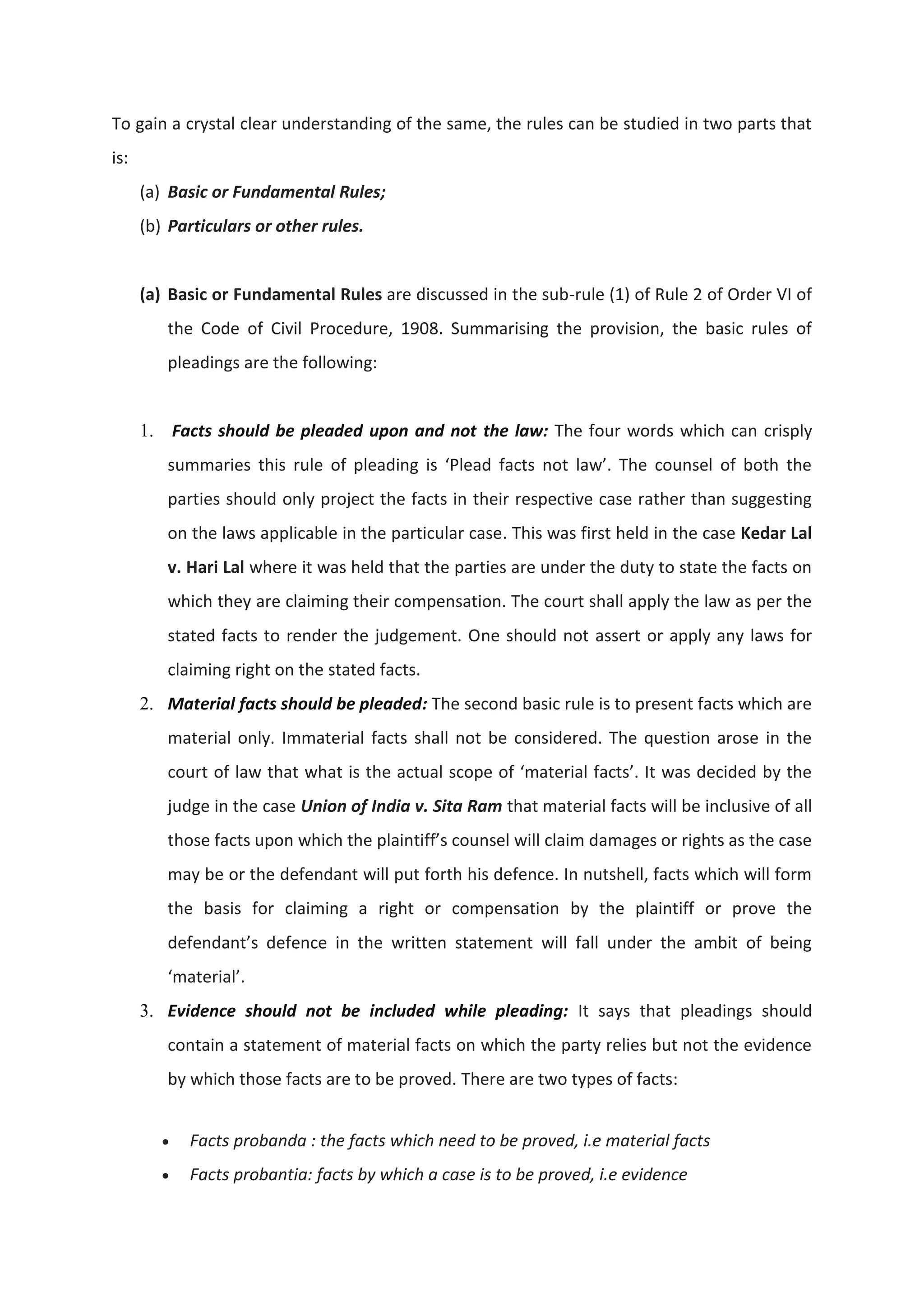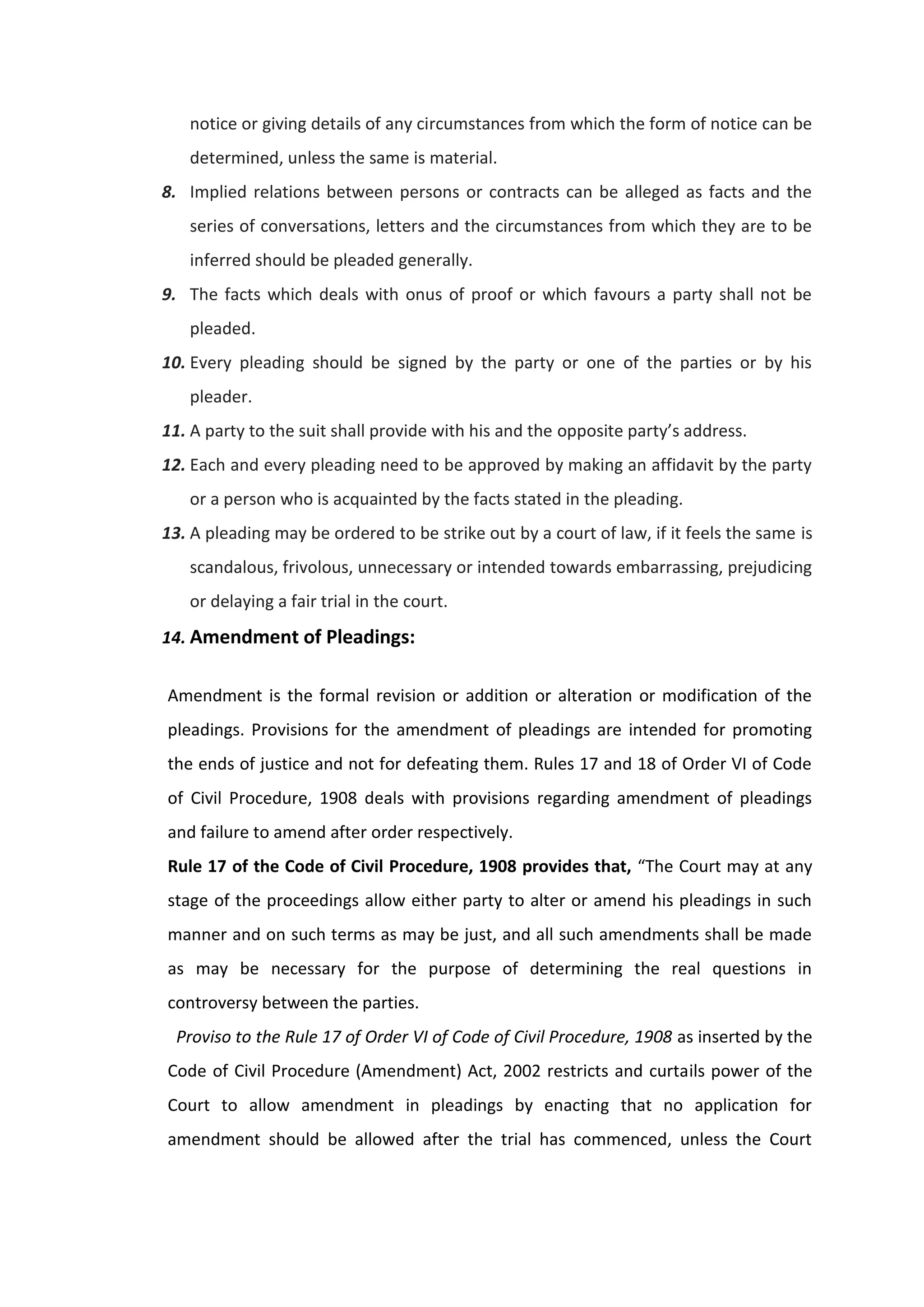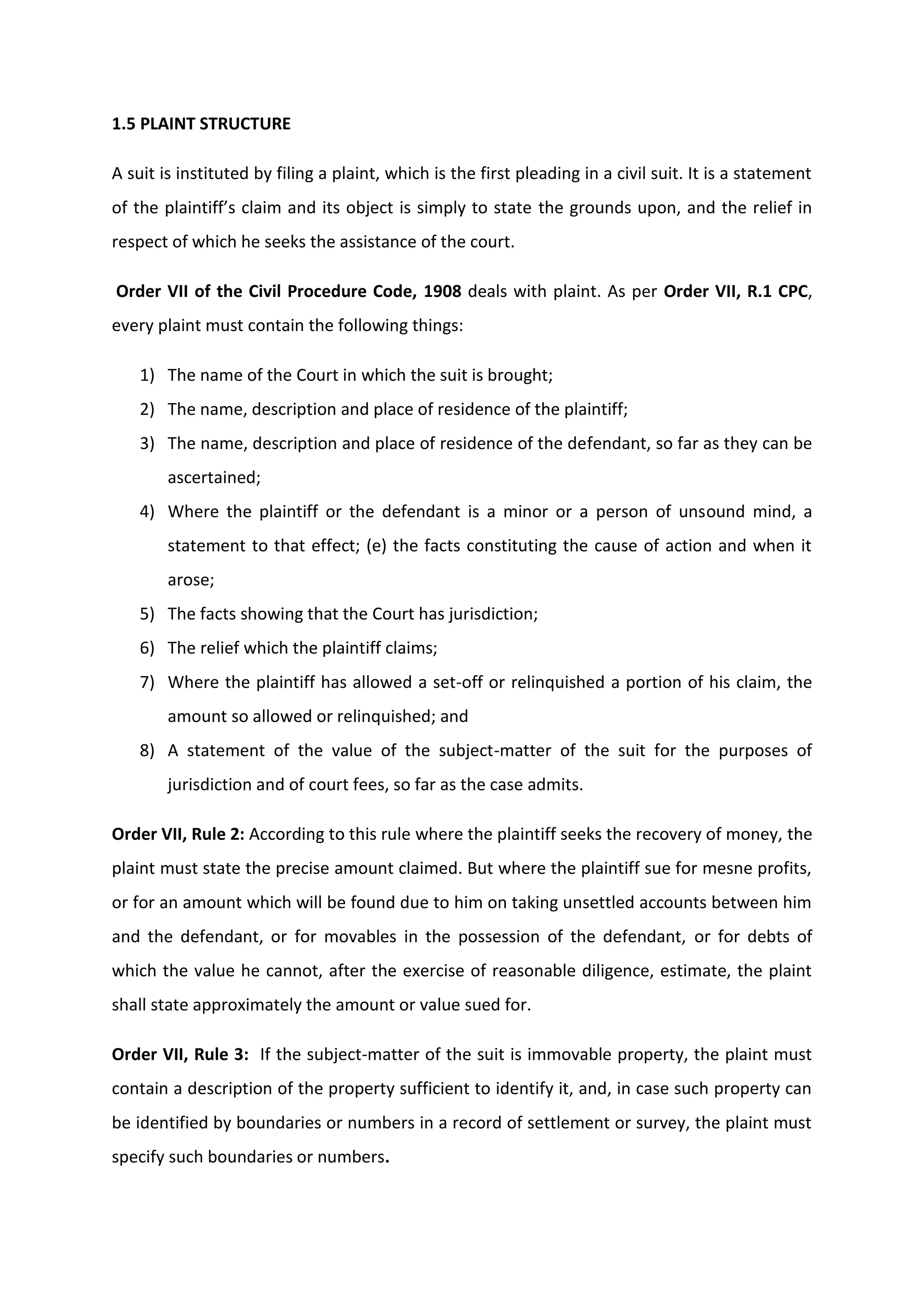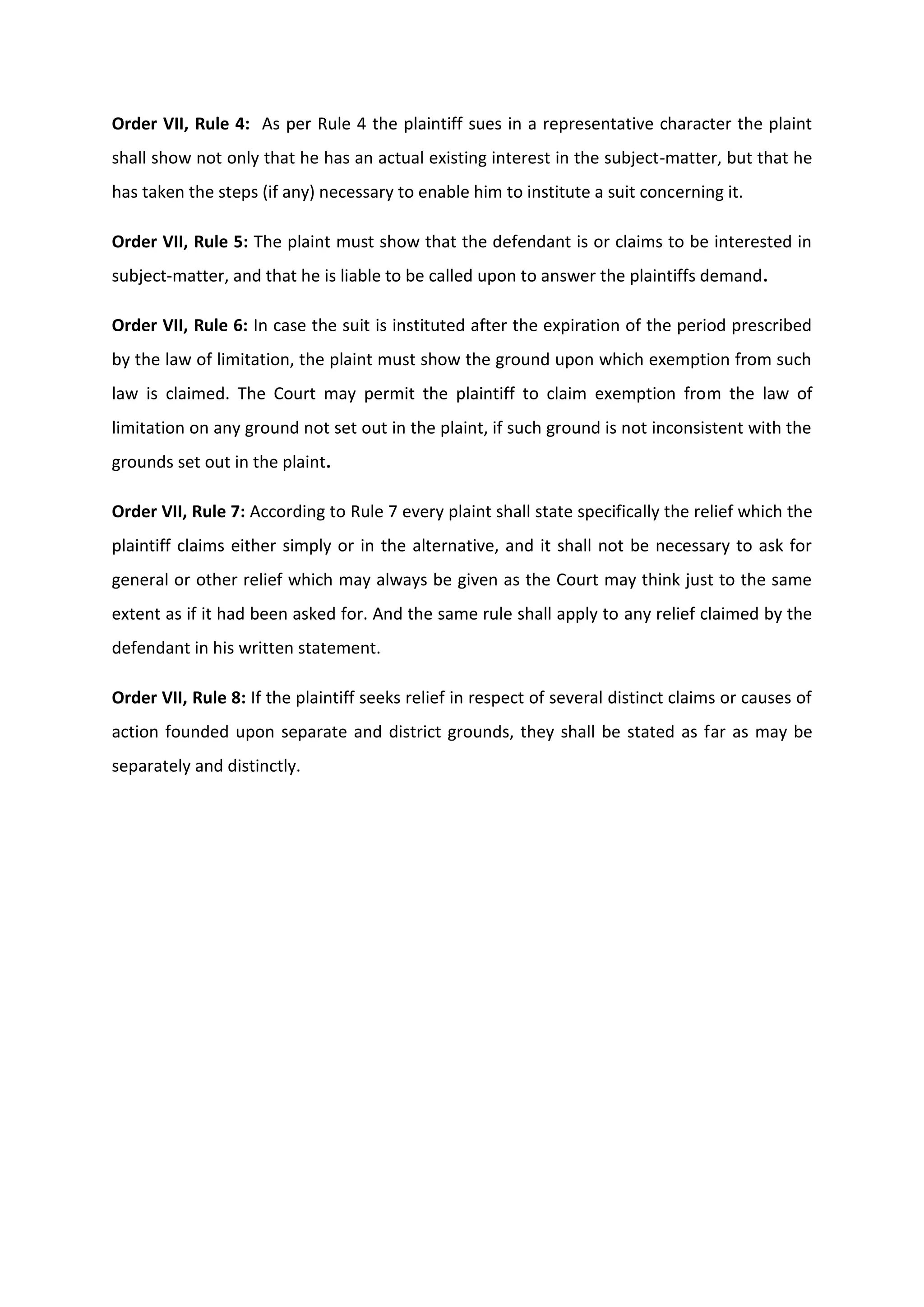The document outlines a comprehensive guide on pleading, drafting, and conveyancing as essential components of legal practice in India, emphasizing their importance in the judicial process. It discusses the structure and fundamental rules of pleadings, the drafting process, and various provisions under the Civil Procedure Code, 1908 that govern these practices. Additionally, it highlights the necessity of clear, structured pleadings to facilitate court proceedings and ensure fair adjudication.

